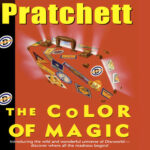A Guide to the Good Life Audiobook
Hi, are you looking for A Guide to the Good Life audiobook? If yes, you are in the right place! ✅ scroll down to Audio player section bellow, you will find the audio of this book. Right below are top 5 reviews and comments from audiences for this book. Hope you love it!!!.

Review #1
A Guide to the Good Life audiobook free
The Stoics actively pursued serenity and, as a result, found joy and gratitude in the lives they led. This pursuit was their fundamental response to the age-old question of how one should live their life. In the context of 2018 America, achieving tranquility and joy seemed like a valuable goal, though often elusive. As a retired intelligence analyst who had spent an entire career scrutinizing potential threats to American interests and the behaviors of foreign leaders and states, the world of national security had been anything but tranquil. It was a world filled with anxiety, fear, and worrisome days and weeks, and one learned to adapt and cope with it.
However, deep down, the understanding that “stress kills” was ever-present. Annual reminders from the doctor notwithstanding, the retired analyst acknowledged the importance of exercise and maintaining good health, as well as minimizing unnecessary stressors in life, even if it couldn’t eliminate all sources of stress. Retirement provided more time to reflect on distractions from the things that provoked anger, sadness, fear, or anxiety, especially in the face of the sobering realization that “all things human are short-lived and perishable,” including oneself.
Stoicism didn’t promise to rescue a person from life’s challenges; instead, it trained individuals to manage unproductive emotions and thoughts. It began by categorizing concerns into a fundamental trichotomy, expanded upon by the author William Irvine from the classical dichotomy posed by the Stoic philosopher Epictetus: “things I have no control over, things I have absolute control over, and things I have some measure of control over.” People could exert control over their goals, values, and the formulation of their life philosophy, but they had no control over uncontrollable events like the sunrise, the past, or certain government policies. There was some control over professional endeavors, but success was never guaranteed.
Therefore, there existed a wide category of matters beyond one’s control that were not worth fretting over, echoing Marcus Aurelius’s wisdom: “Nothing is worth doing pointlessly.” It was more productive to focus on cultivating one’s inner tranquility and addressing things that could be influenced, akin to Niebuhr’s serenity prayer: “Grant me the serenity to accept the things I cannot change, courage to change the things I can, and wisdom to know the difference.”
Author William Irvine acted as a welcoming guide on the journey into Stoicism, emphasizing the relevance of four Roman Stoics to modern readers: Epictetus, Seneca, Musonius Rufus, and Marcus Aurelius. His book was divided into four main parts. Part one explored the origins of philosophy and delved into the rise of Stoicism. Part two provided an inventory of psychological techniques developed by the Stoics for achieving and maintaining tranquility, with a special focus on “negative visualization,” a method for rationalizing fears and anger by contemplating “what’s the worst that can happen.” Part three offered “Stoic advice” on a wide range of topics, including social interactions, handling insults, dealing with grief and anger, resisting the lure of luxurious living, and managing the desire for fame and fortune, aging, and death. The concluding part entertained readers with Irvine’s often humorous reflections on his personal journey in practicing Stoicism.
The reader even entertained the notion that after reading, reflecting, and beginning to practice “the ancient art of Stoic joy” over the past two weeks, they might have become a kinder, more serene, and thankful individual. They aspired to be a better citizen, grateful for their family, friends, interests, and the comfort of a decent home in a pleasant city. They were willing to give Stoicism a genuine try, following Irvine’s advice as a “stealth Stoic,” albeit having already disclosed their interest. They planned to withhold a star rating for now and possibly update their thoughts as they progressed (or didn’t) in their Stoic journey.
Review #2
A Guide to the Good Life audiobook Series Shifters Unbound
Section one provides a historical overview of Stoicism. While I appreciated its inclusion in the book and found it somewhat interesting, it’s not a section I would revisit or reread.
Section two, on the other hand, delves into Stoic Psychological Techniques and is the real gem of this book. Having completed the book, I plan to return to this section immediately to create “cheat sheet” notecards for myself, as I intend to incorporate these techniques into my daily life. I won’t summarize this section because I believe it’s worth purchasing the book for this part alone, and I don’t want to spoil it.
Section three, unfortunately, was lengthy, redundant, occasionally illogical, and sometimes simply perplexing. It’s unclear who the intended audience for this section was, but it didn’t resonate with me. The examples provided were often peculiar, and there were too many conclusions that seemed disconnected from the preceding content. For instance, in the opening paragraph of chapter fifteen, Irvine discusses the relationship between wealth and fame, suggesting that seeking wealth is driven by a desire for fame. However, he fails to adequately support this claim. He shifts from “a case can be made…” to “if our primary reason is…” without substantiating the argument, leaving readers puzzled. While I may agree with the ultimate conclusion that we shouldn’t pursue wealth or fame, Irvine doesn’t effectively justify why this is the Stoic perspective.
Additionally, Irvine dedicates an entire ten pages to addressing how to respond to insults, which feels excessive. It’s unclear why he encounters insults so frequently, and condensing this section to ten pages would have made a more impactful read.
By the time the fourth section rolls around, the writing becomes repetitive, and the reading experience becomes tedious. The same key points are reiterated for the third and fourth times, which diminishes the overall effectiveness of the content.
Review #3
Audiobook A Guide to the Good Life by Cris Dukehart
In the ancient world, two contrasting philosophies prevailed. The Cyrenaics emphasized the pursuit of pleasure, while the Cynics advocated asceticism and the avoidance of pleasures. Stoicism, however, positioned itself between these extremes. Instead of fixating on the presence or absence of pleasures, Stoicism focused on shaping one’s mindset and attitudes. It was a philosophy accessible to anyone, whether they were emperors like Marcus Aurelius or slaves like Epictetus.
The author of this book not only provides a detailed historical account of Greek and Roman Stoics and their teachings but also extends his explanation to show how Stoicism can be applied in the modern context, making it a practical philosophy for those who wish to live it.
Firstly, the author highlights the value of “negative visualization.” This practice involves imagining the loss of various aspects of one’s life, be it loved ones, possessions, or preferred lifestyles. By doing so, individuals prepare their minds to cope with adversity when it inevitably strikes. This exercise not only helps in dealing with loss but also fosters a deep sense of appreciation and gratitude for the things one currently possesses.
Secondly, the author underscores the significance of focusing on “what can be controlled.” Worrying about factors beyond one’s control is futile, so finding tranquility involves maximizing situations and interactions where one has control. For instance, when a runner aims to win a race, the outcome is beyond their control, potentially leading to disappointment. However, setting the goal of “doing one’s best” is entirely within one’s control, allowing them to influence the outcome regardless of winning or losing.
In addition to these fundamental skills, Stoics offered insights into managing social interactions in ways that promote tranquility. This involves cultivating or avoiding relationships and interactions based on their positive contribution to the Stoic way of life. Furthermore, individuals can proactively develop certain virtues and mindsets to reduce instances of taking offense and holding grudges. The author shares a personal example of how adopting these practices significantly reduced his irritation with other drivers’ behavior on the road.
Throughout the book’s many chapters, the author offers valuable advice on a wide range of topics. He delves into methods for rationalizing sadness and upsets, addresses issues related to sex, anger, fame, luxury, exile, and death, and provides practical tips for modern individuals interested in adopting Stoicism. One noteworthy tip is to refrain from openly discussing one’s Stoic beliefs, as this can preemptively mitigate ridicule and misunderstandings from others.
Overall, this well-written book by an experienced Stoicism teacher and practitioner is clear, comprehensive, and especially suited for those new to the philosophy. The author’s attention to detail, such as distinguishing between ancient figures with similar names, demonstrates his proficiency not only in teaching the subject but also in helping readers avoid common misconceptions and errors.
Review #4
Audio A Guide to the Good Life narrated by Cris Dukehart
Un libro straordinario! William Irvine presenta una discussione estremamente interessante su come applicare lo stoicismo alla vita contemporanea, con uno stile che è semplice ma allo stesso tempo concreto.
Review #5
Free audio A Guide to the Good Life – in the audio player below
Obwohl der Text etwas akademisch formuliert ist, bietet er äußerst klare Erklärungen. Für diejenigen, die die Stoiker wirklich verstehen möchten, ist dies eine ausgezeichnete Informationsquelle.
Galaxyaudiobook Member Benefit
- Able to comment
- List watched audiobooks
- List favorite audiobooks
GalaxyAudiobook audio player
If you see any issue, please report to [email protected] , we will fix it as soon as possible .






